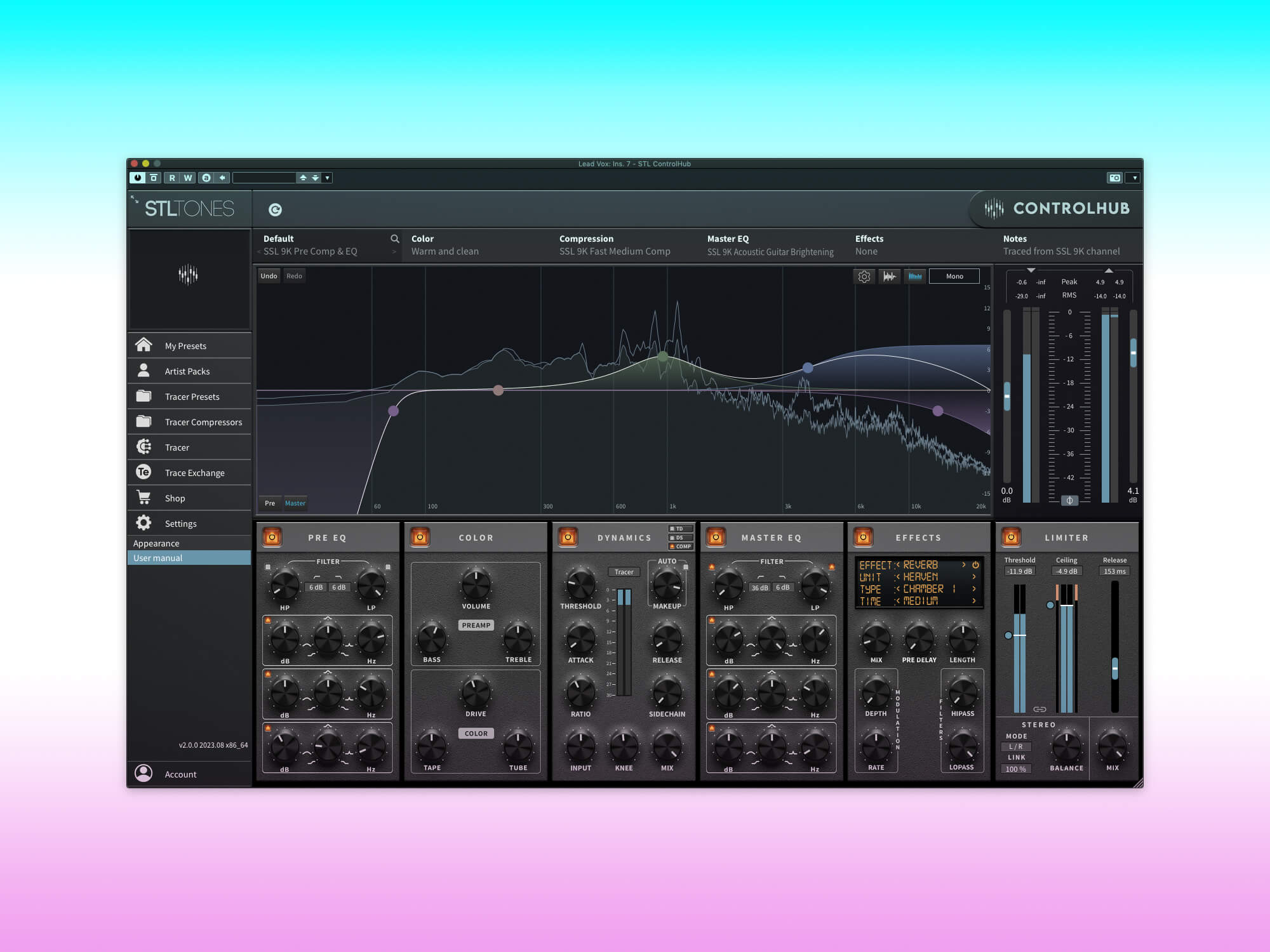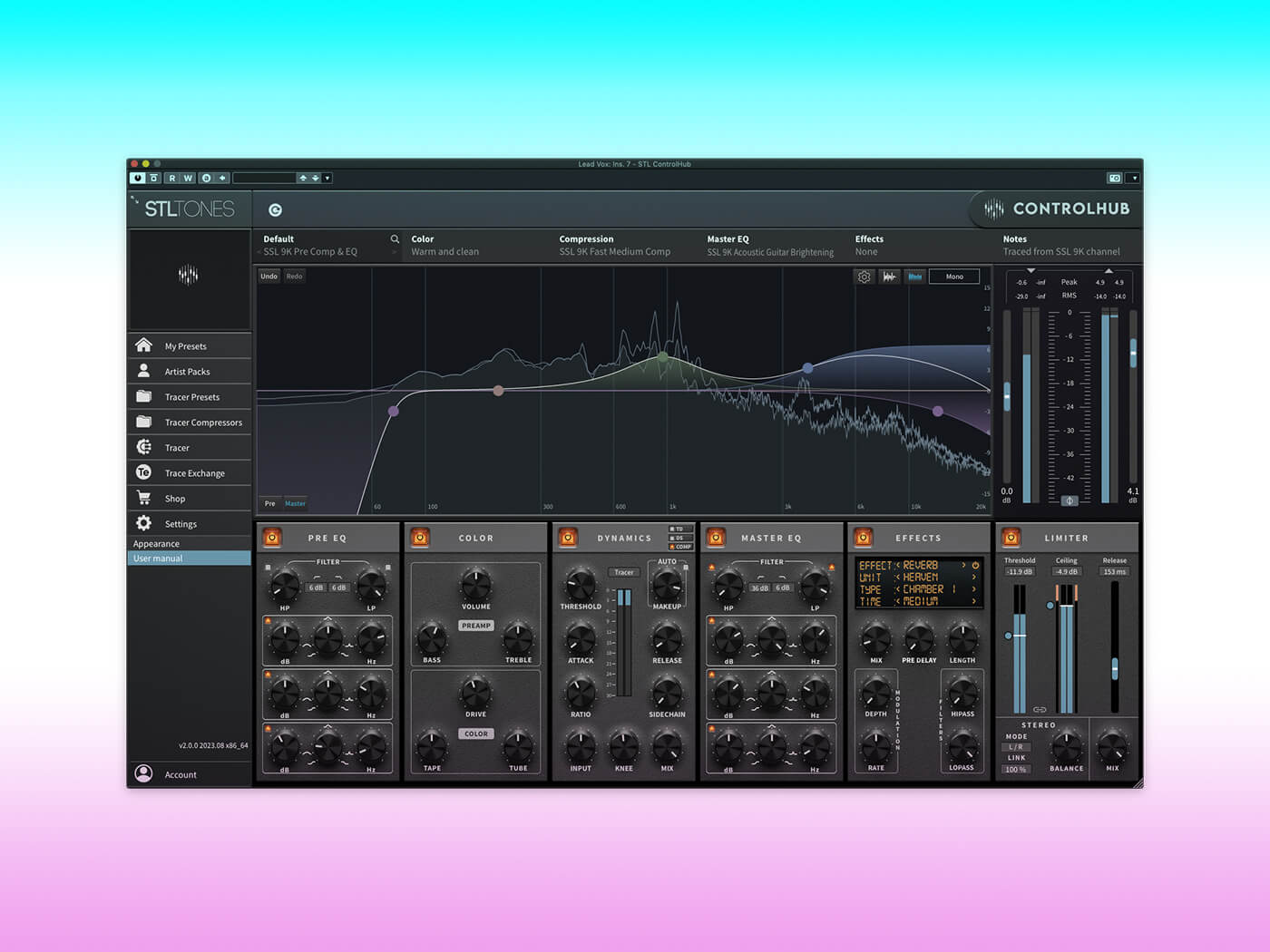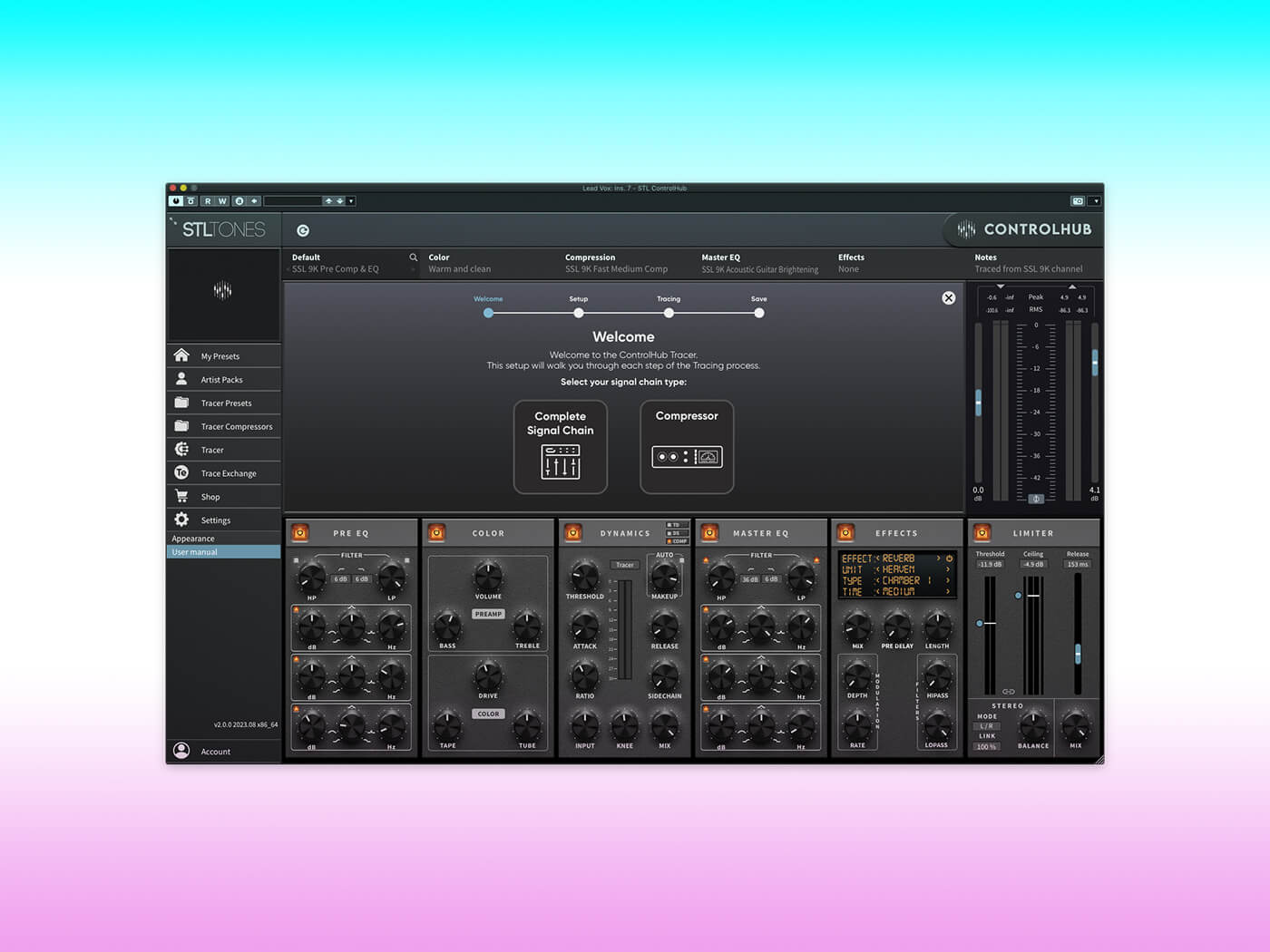STL Tones ControlHub and Tracer let you capture and recreate any plugin chain
If you’ve ever wanted to wrap your many chains of resource-hungry processors into a single, unified plugin, then STL Tones may have a solution for you.

STL Tones ControlHub
Review Overview
Our rating
8
Our verdict
⊕ Chameleon-like sonic character via traced compressors and chains
⊕ Share tracings direct from plugin via Trace Exchange
⊕ Helpful spectrogram and waveform visualisations
⊖ Modules cannot be re-ordered
⊖ No compressor activity trace overlaid on waveform view
⊖ Balance control can’t reach full 100% on a channel, despite labelling saying it can
ControlHub $199 + Tracer add-on $99 + Expansion Packs $49
ControlHub Pro (subscription only, includes ControlHub, Tracer and Expansion packs): $15/month or $150/year
Many producers have go-to processing chains for various studio tasks, assembled from their favourite plugins and hardware.
However, not all processors are made equal – an EQ that’s reliable when tracking may be less effective when mixing or mastering, for example. As a result, one can spend years – and heaps of cash – building up the ideal collection of effects required for various chains. Or, you could just grab a subscription to STL Tones’ ControlHub plugin and be done with it.
Strip show
At first glance, ControlHub looks like a standard channel strip plugin, with each of its processing stages packed into its own module. Here’s the rundown.
The processing chain starts with the Color module, which takes on the role of preamp and/or tape return, with shelving bass and treble EQ bands. Plus, a distortion generator allows you to blend tube drive and tape saturation style distortions. This feeds a dynamics stage that contains three rearrangeable sub-modules, namely a de-esser, a transient designer and a compressor with a choice of VCA or FET models.
Next is the Master EQ stage that provides three fully parametric bands, as well as high- and low-pass filters with slopes variable from a gentle 6dB/oct, all the way to a brickwall 96dB/oct. EQ curves are drawn as an overlay on a spectrograph that dominates the plugin’s window. You can drag the nodes of the curve as an alternative way of configuring the EQ bands.
The Master EQ is followed by the Effects module containing both a reverb and a delay. There are seven reverb models, each based on different hardware reverbs, and both analogue and digital delay models. It’s unusual to include such processors in a channel strip, although they’re embedded in the strip similarly to how they would be if applied via inserts on an analogue console, and there is an attraction to everything being dealt with within a single plugin.

The effects sound nice, too, and work well during mixing, but if you already have some premium modelled reverb and delay plugins then there’s a good chance they’ll be more detailed and accurate than ControlHub’s Effects module. So, an unusual module for a channel strip, but we’ll take it.
The chain concludes with a limiter module, balance control and master wet/dry mix setting. If you switch the main visualisation from spectrogram to waveform mode, the gain reduction activity of the limiter is overlaid on the waveform readout, which is handy.
It’s a shame there’s no similar readout for the compressor’s activity, although the waveform is post-compressor so you can at least glean some information about the compressor’s activity from it. With regards to the balance control, this can operate in either L/R or M/S mode, but only weights the signal to one channel or another and can’t go fully 100 per cent one way or another, despite what is shown on the control’s value readout.
Tracer
So far there’s nothing particularly remarkable about ControlHub. It offers a healthy selection of tools that work well for tracking and mixing, and that can also be used for mastering. Still, the inability to re-order the modules takes away some usefulness in this area. But now we get to the plugin’s party trick: tracing. This lets you ‘sample’ either a hardware compressor (or a full processing chain) for recreation within the plugin.
Tracing is a relatively straightforward process and involves playing a special audio file, consisting of various noises, pulses and drones, through a compressor or processing chain, and then importing the captured result into ControlHub for analysis. If tracing just a compressor, the results are made available as an option in ControlHub’s compressor module alongside the built-in VCA and FET models. If tracing a full strip, the results are saved as a complete preset that can be loaded into the plugin when needed.

Now, this all sounds very exciting, but it’s important to appreciate the limits of the system. For one, when tracing an entire chain, you have to manually configure the Color and Master EQ modules to give the best-sounding match to the chain you are tracing. In other words, it is still just the compressor that is being measured and recreated, although this tracing is then wrapped in an entire preset.
Perhaps more importantly, the accuracy of a tracing depends entirely on how close you remain to the original, as-traced settings. The further you move ControlHub away from these traced settings, the less accurate the tracing becomes when compared to similar settings on the original compressor.
Trace Exchange
The plugin connects directly to Trace Exchange, an online resource that lets you share your tracings and download those created by others. In theory, this gives you a near-limitless choice of both common and boutique compressors, not to mention the ability to import ‘signature’ channel strips created by notable and well-known users of the platform.
The problem with this, as we see it, is that every recording is different, and so processors have to be tuned and configured to match the audio being processed. But, as we have mentioned, doing this in ControlHub can reduce the accuracy of the tracing; this is where the Pre EQ comes in.

The module is identical to the Master EQ module, and is useful in its own right as a pre-compression EQ, but its primary intended function appears to be for tuning a recording to match it to a traced chain. This isn’t an unreasonable solution and it certainly helps, but it still has a feeling of the tail wagging the dog!
Is the whole tracing thing a white elephant, then? Not at all. Changing the response of the compressor does have an impact on the overall character of results, and even if a tracing doesn’t sound identical to the source it will nonetheless have its own particular character for you to work with, which is definitely a good thing.
We don’t think ControlHub is any time soon going to supersede the detailed yet fixed models of individual processors and channel strips that we’re familiar with, but the plugin is unquestionably a fascinating, effective and exceptionally flexible channel strip in its own right.
Key features
- Channel strip plugin (AU, VST and AAX)
- Tracing system for capturing and recreating response of other compressors and chains
- Color module emulates tube drive and tape saturation
- Dynamics module contains de-esser, transient designer and compressor
- Two compressor models included: FET and VCA
- Two parametric EQ modules with high- and low-pass filters
- Reverb and delay effects module
- Limiter module
- Licence via subscription or perpetual licence
- Contact: stltones.com